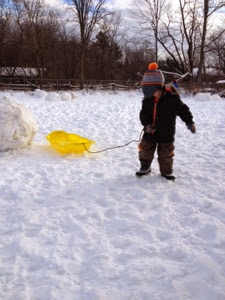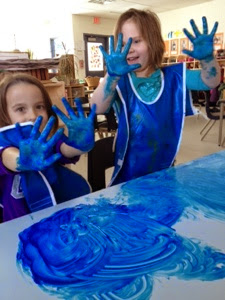As a part of learning to build, we've introduced the idea of planning.
Planning takes a lot of high-level cognitive effort, and children who can visualize, problem-solve and co-operate using a plan are successful.
After reading lots of books about building and planning, the children are starting to understand the important role planning takes in a project.
We've set up an architect's office beside the construction carpet to encourage planning on paper, because sometimes ideas are too big to fit inside your head. They are enjoying exploring the protractor, compass, and other design tools. There are lots of books to inspire ideas.



The planning on paper is starting to spill out into the classroom at large.
 |
| Isabelle and Rylee make a plan for out jack-o-lantern. |
Taya was inspired by the Parthenon, and made a plan. She then built a representation of it out of wooden blocks.
Today, Ryan made a plan to enclose the carpet area in a perimeter of Kapla blocks. He enlisted some helpers to carry out the plan, communicated it to them, assigned them roles ("You build that side, and you build that other side."), and brought them the materials they needed to do the job. He even gave his staff encouragement and thumbs-ups!
Here are some of the students' discoveries about planning:
-It is OK to change a plan if problems arise.
-More than one person can make a plan together.
-Plans can be shared so others can make the same thing.
-It's good to talk about plans and get input from others.
-Big plans need a leader to have them carried out.
As an adult, how do you make plans throughout your day? How do you communicate them to the people involved?

















































